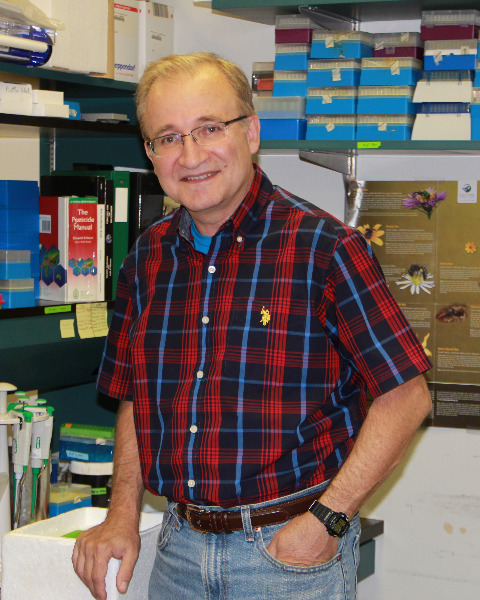Poster Display
Formal and Informal Teaching
D3318: Varroa destructor economic injury levels and pathogens associated with colony losses in western Canada

Nuria Morfin
Lead of the BC Technology Transfer Program
The University of British Columbia
Abbotsford, British Columbia, Canada- LF
Leonard J. Foster
Principal Investigator
The University of British Columbia
Vancouver, British Columbia, Canada 
Ernesto Guzman-Novoa (he/him/his)
Professor
University of Guelph
Guelph, Ontario, Canada- PV
Paul Van Westendorp
Provincial Apiculturist
BC Ministry of Agriculture and Food
Abbotsford, British Columbia, Canada - RC
Robert W. Currie
Professor and Head, Department of Entomology
University of Manitoba
Winnipeg, Manitoba, Canada - HH
Heather Higo
The British Columbia Honey Producers Association
Langley, British Columbia, Canada
Presenting Author(s)
Co-Author(s)
The aim of this study was to record V. destructor levels in colonies from five regions of British Columbia, Canada, and analyze them for associations with health parameters, as well as with other pathogens identified using RNAseq. Significant differences in varroa levels, colony strength, and colony mortality between regions were found. Also, varroa levels in the fall significantly predicted odds of colony mortality in the spring. Colonies with ≥ 1% mite infestation in the fall had a significantly higher mortality rate compared to colonies with < 1% mite levels. Additionally, Deformed wing virus-B levels were eight times higher than those of the DWV-A variant in all the regions. Malpighamoeba mellificae and Nosema (Vairimorpha) apis transcripts were identified, along with other viruses like Apis filamentous virus, Lake Sinai virus, and Apis mellifera solinvivirus 1. The dynamic nature of host-pathogen interactions urges constant pathogen surveillance and revising economic injury levels for V. destructor.

.png)
